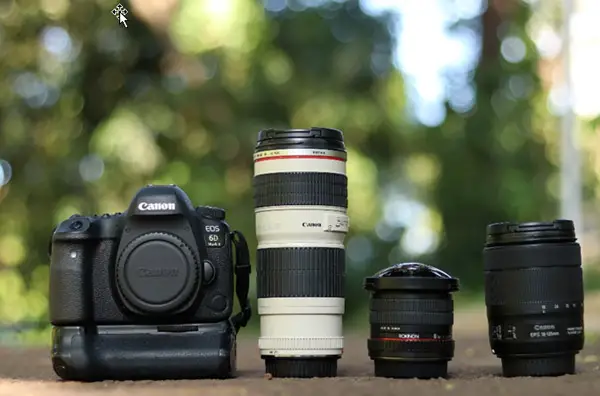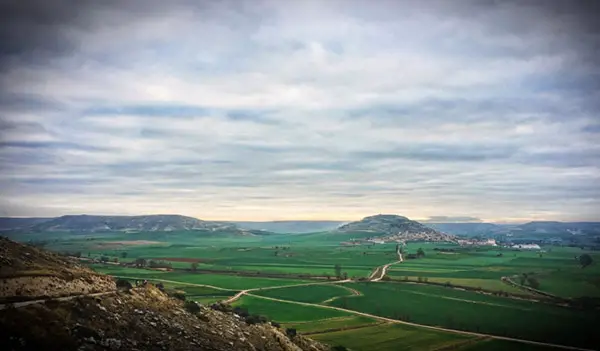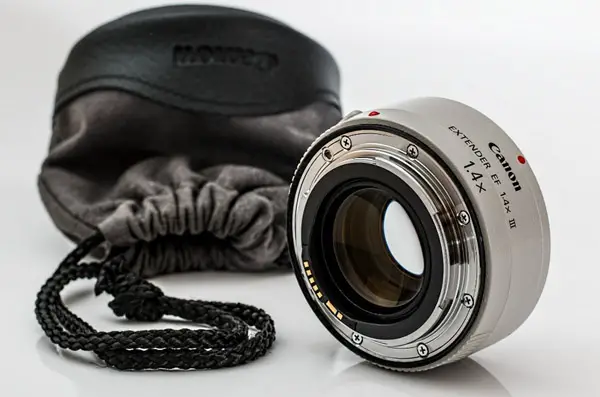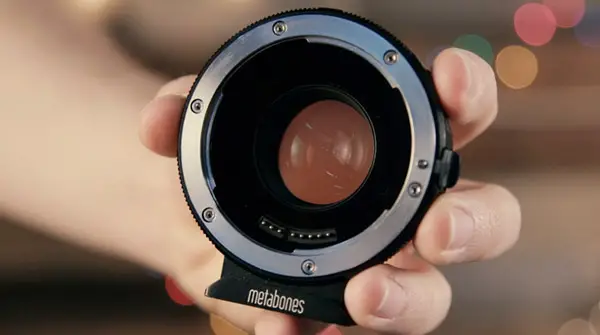There is an ongoing discussion within the photography world on the pros, cons and when exactly it is best to use APS-C lenses rather than full frame lenses. When you come to choose a new lens for your camera, deciding between an APS-C or full frame lens can have a significant effect on the images you produce.

Understanding the differences between the two types of lenses will help you choose the right one for you and your photography type.
While full frame cameras are most often used by professional photographers and are known for their high-quality images, APS-C lenses are not to be sniffed at. The smaller sensor found in APS-C camera bodies means that the camera and the lenses are able to be smaller, more compact, and lighter- a bonus for styles of photography such as street, travel, and wedding.
However, understanding the differences between the two types of lenses as well as being able to tackle the “crop factor” calculations will really help to set you apart from most casual, amateur photographers. As with most art forms, once you know the rules well enough, you can learn how to bend them to produce something unique. And while I’ll leave being unique up to you, today I’m going to help you understand more of the rules.
What’s the Difference Between APS-C and Full frame?
APS-C and full frame refers to the camera’s sensor size. It has nothing to do with how many pixels are on the sensor though. Like most things to do with photography the terms date back to when cameras used film rather than the digital sensors that the majority of today’s cameras use.
- A full frame camera uses a sensor that is the same size as the traditional 35mm film. It measures 36 x 24mm.
- An APS-C sensor which is found in the majority of DSLRs and mirrorless cameras is slightly smaller. It measures 22 x 15mm.
APS-C stands for advanced photo system type C. It is a type of image sensor format that first appeared in 1996 and actually has three variations, “H”, “C”, and “P”. Where H stands for high definition, C for classic and P for panorama. While APS-C is the most common type all three use a smaller sensor size than the full frame sensor.
Do Professional Photographers Use APS-C?
The traditional narrative is that professional photographers use professional equipment i.e., full frame cameras and lenses. While this may be true for the best photographers in the world there are also many professional photographers who are choosing to use either APS-C camera bodies and/or lenses.
As technology has progressed, so too has the quality of the APS-C lenses and cameras allowing photographers to create high quality images no matter whether they use full frame cameras and lenses or not. Most notably this is seen in situations where having lighter, smaller equipment is favorable such as event, street, and travel photography.
Are APS-C Lenses Cropped?
As soon as we start talking about APS-C and full frame cameras and lenses the “cropped” starts appearing. It can be a particularly confusing concept to get your head around at first (it certainly took me a little while), especially when we start needing to do calculations. Don’t worry though, I’ve got a little hack for you further down.
Firstly though, it’s important to understand that when we talk about cropping and the crop factor, we aren’t talking about the lenses specifically. Yes, the lenses do come into the play but again we are talking about the image sensor size.
If you take a look at your camera and its lens(es) you will notice that the lens is circular, and the sensor is rectangular. This means that the round lens creates a circular image, and the rectangular image sensor captures a rectangular portion of the circular image. Make sense?
As the standard, full frame sensor is 35mm, a camera with an image sensor that is smaller than this (i.e., the APS-C image sensor) will cover a smaller portion of the same circular image created by the same lens. This changes the field of view and is responsible for the term crop.

While the depth of field is not affected, it does appear zoomed in or like it has been cropped when you compare it to an image taken using a full frame sensor with the same aperture.
APS-C to Full frame Calculator
Before digital photography took over the photography world, pretty much all cameras worked with 35mm film and things were great. However as digital cameras became more and more popular, photographers got a little bit stuck.
This was because the majority of digital cameras used a smaller sensor size than the traditional 35mm film cameras. So as photographers made the switch to digital photography, they noticed that the field of view seen through the lens of a digital camera was different to that of a 35mm film camera. No longer was a 50mm lens giving them a 50mm lens field of view. Instead, it was just a little bit more zoomed in.
To get over this, photographers created what is known as the crop factor. A simple calculation that allows you figure out “35mm equivalent” field of view for each lens when you attach it to a camera with a smaller sensor size.
Most APS-C cameras have a crop factor between 1.3 and 1.8 and are easy to calculate with a quick internet search and without having to do a bunch of math. Then all you need to do is multiply by the focal length.
For example, a 50mm lens on an APS-C camera with a crop factor of 1.5 -you would do 1.5 x 50 which would give you 75. Meaning that your 50mm lens would be showing you the same view that a 75mm lens would on a 35mm image sensor.
For those that have a zoom lens you can also work out the equivalent focal length in the same way. So, a 70-200mm zoom lens being used on a 1.5x APS-C sensor would give you a field of view that is equivalent to 105-300mm on a full frame sensor.
Full frame Lens On APS-C Camera
A full frame lens has obviously been made to be used with a full frame camera, but can you still use it on your APS-C camera? Most likely yes. While I would always recommend checking with the make and model to see if they are compatible, this combination of lens and camera body is a common choice for photographers just starting out.

Pros
The full frame lens on an APS-C camera doesn’t change the depth of field or the image quality as these are primarily determined by the lens itself. The only major thing that changes (as I discussed earlier) is the field of view.
When a full frame lens is used with an APS-C sensor the field of view is narrowed. This means that you can photograph subjects that are further away with greater ease. An important thing to consider if wildlife and sports photography is your thing.
Cons
It is important to take into consideration that these full frame lenses tend to be bigger, heavier, and more expensive than APS-C lenses. So it may not be ideal if you are stuck for space and weight such as when you are traveling. Plus, if you’re a landscape photographer, this combination of lens and body won’t allow you to capture ultra-wide-angle shots and the smaller nature of the APS-C sensor will crop some of the image off.
APS-C Lenses on Full Frame Camera
So, if using a full frame lens on an APS-C body results in a zoomed in image, it stands to reason that the opposite combination, an APS-C lens on a full frame body would result in a zoomed-out image. That is to say you end up with some heavy vignetting around the outside of the image. There are, however, some full frame cameras that are able to either detect the APS-C lens automatically or allow you to change the settings manually in order to crop the image so that you don’t see the vignetting and the image fills the frame.

Nikon, Sony, and Pentax cameras all allow you to pair an APS-C lens with a full frame body. Canon, on the other hand has a slightly different mount that doesn’t allow you to use a Canon APS-C lens on a Canon full frame body. Interestingly some 3rd party APS-C lens are still compatible with the Canon full frame body.
Pros
The biggest advantage to using an APS-C lens with a full frame camera is that APS-C lenses tend to be less expensive but still high quality. They can also work well if you are using your camera to capture video content too.
Cons
Using an APS-C lens on a full frame camera means that you will only use part of the sensor when taking your photo. This in effect reduces your image resolution and can mean that a camera with 24 megapixels may be restricted to producing 10-megapixel images.
Here’s Wolf Amri’s take on the APS-C vs full frame discussion:
Converting Your APS-C Lens to Full Frame Using a Teleconverter
As we discussed earlier, if you use a full frame camera body with an APS-C lens you are likely to be greeted with a whole lot of vignetting. However, investing in full frame lenses or an APS-C camera body may not be possible. Luckily, there is a way to convert your APS-C lens into a full frame lens without having to just buy a full frame version of it. You use a teleconverter (also known as an extender).
A teleconverter is a little gadget the fits between your camera body and lens. It works by magnifying whatever is in the center of the other lens and so helps to bridge the gap between the APS-C and full frame sensor size. Teleconverters are available in different sizes but it is important to check your camera make and model and not all cameras are compatible with all teleconverters.

Pros
Teleconverters are a great friend to those who are short of space and weight. A 2x teleconverter can transform your 100-400mm zoom lens into an 800mm lens without the hefty weight and size increase. Awesome if you’re into travel, street, or event photography. In fact, teleconverters are becoming more and more common within sports photography were getting close to the action can sometimes be hard but you still need the close-up shots.
These little additions won’t break the bank either which is great if you’re looking for a way to convert your APS-C lens to full frame. Choose a teleconverter with the same crop factor as your camera and say goodbye to your vignetting.
Cons
Unfortunately, teleconverters not only magnify the image, but they can also magnify any chromatic aberrations and other unwanted features that a dedicated lens wouldn’t give you.
The biggest downside to teleconverters, however, is that they result in a reduction in light and so a reduction in the widest aperture available to you. This might also lead to slower autofocus and increased camera shake. So, if you are planning to shoot in low light conditions, a teleconverter may not be the best option.
Check out some teleconverters here.
Converting Your Full Frame Lens To APS-C with a Speedbooster (telecompressor)
Speedbooster lenses (also known and telecompressors or focal reducers) are small lenses that allow full frame lenses to be used with APS-C cameras without losing any of the image. It essentially allows you to have a full frame field of view on an APS-C camera.
This kind of lens can be most easily understood in that it is the opposite of a teleconverter lens. The lens reduces the focal length which then has a domino effect of the F-number of the lens. So, when you mount this and your full frame lens onto an APS-C camera you are basically condensing all of the light onto the sensor giving you the full frame view.

Pros
Speedboosters help produce a noticeably sharper image, gain of a stop of light and a shallower depth of field. This is great for portrait photography.
Cons
Unfortunately, most speedbooster lenses do not come with autofocus which may take some getting used to. Just like the teleconverter lens, there is also a drop in resolution around the edges of the image at larger apertures despite the center still being sharp.
Here are some speedboosters you can buy.
I hope this article cleared up the topic of APS-C and full frame lenses for you.
Click the following link for an article about APS-C vs full frame cameras.









4 comments